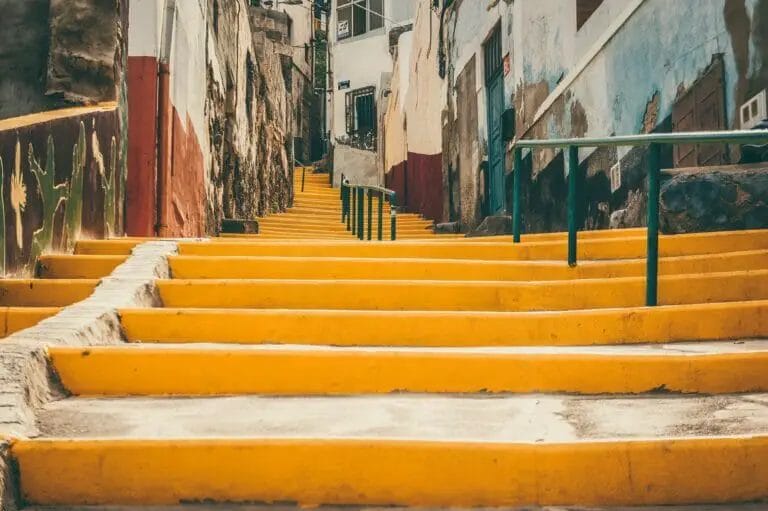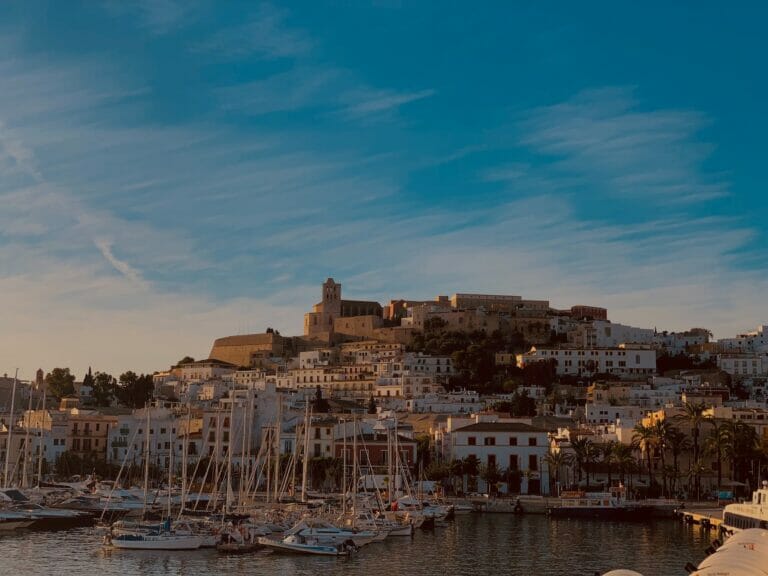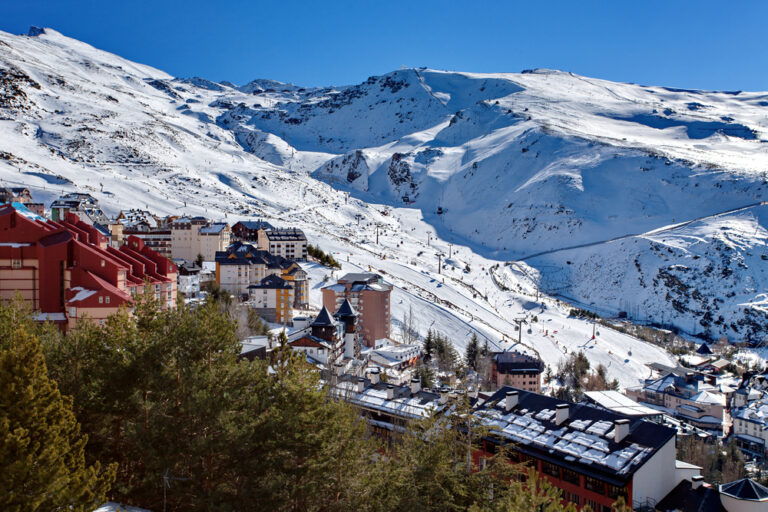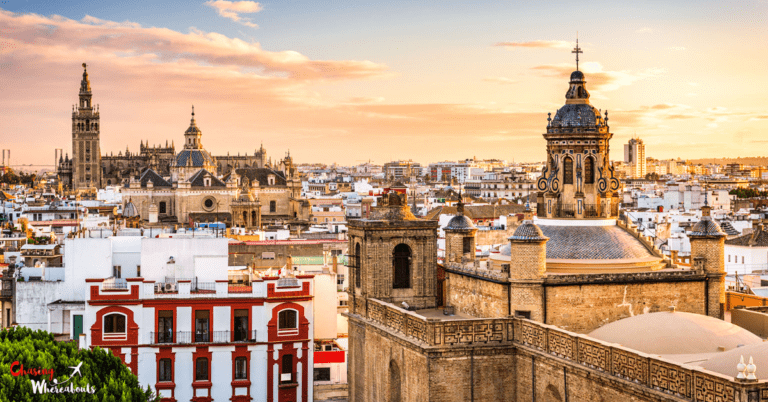Things to do in Segovia Spain
Segovia is a fascinating destination to explore during the summer in Spain, and renting a car is an excellent way to get around and explore the city’s historical sites and stunning landscapes.
One of the most iconic landmarks in Segovia is the Roman aqueduct, which passes through the city center and showcases ancient Roman engineering marvels. The Alcázar fortress-palace is another must-see attraction, and it’s a significant landmark connected to Spain’s medieval aristocracy. Visitors can also explore the city’s high medieval Romanesque churches and lavish Renaissance mansions to get a glimpse of the past.
During summer in Spain, renting a car allows travelers to explore the city’s culinary delights and surrounding natural landscapes. The famous Segovian suckling pig and roasted lamb dishes are must-try culinary delights, and visitors can easily find local restaurants serving these dishes. Travelers can also take a scenic drive through the Sierra de Guadarrama mountain range, which is an ideal spot for hiking and exploring natural pools at Las Presillas.
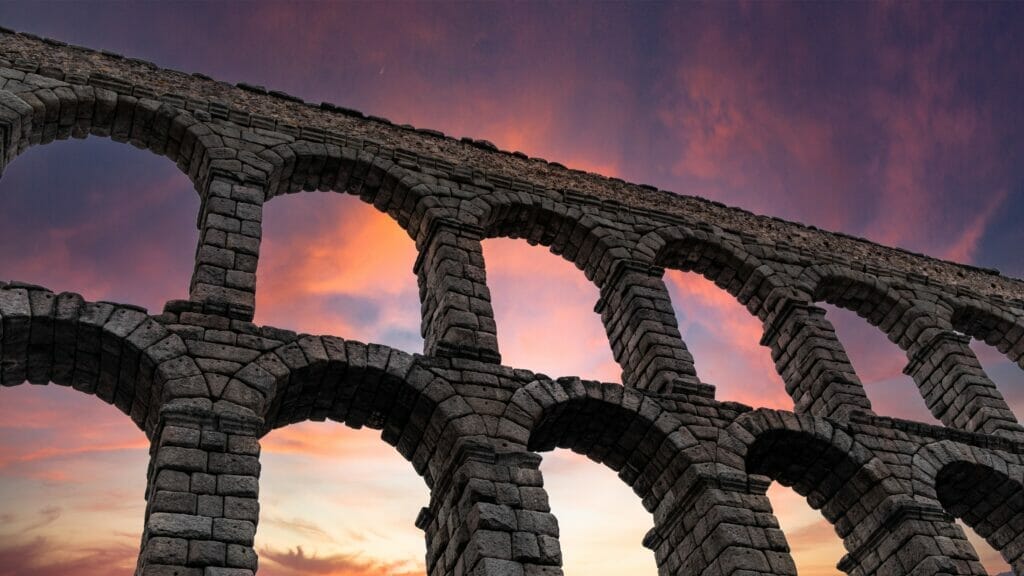
Things to do in Segovia Spain
1. Aqueduct of Segovia
One of the greatest Roman structures in Europe, this magnificent building serves as a symbol for Segovia.
It travels 15 kilometers before even entering the city, and up until the 1800s, it was still bringing water from the Fro River to Segovia.
The aqueduct was built in the first century, under the authority of Emperor Domitian. What makes it interesting is that cement was only sometimes employed, and the interlocking stones are held together more by gravity than by mortar.
The aqueduct can be followed down Calle Almira and then down the hill at Plaza Azuguego, where it is very picturesque and rises to a height of 28.5 meters.
2. Alcázar of Segovia
High on a crag and dominating Segovia’s western skyline, this celebrated palace has Roman and Moorish origins, but its storybook renaissance appearance dates to the 16th-century reign of Felipe II. Numerous Castilian monarchs lived at the Alcázar, like the Catholic Queen Isabella in the late 15th century.
A tour is a must, and will show you around the Throne Room and the Hall of Kings, where there’s a gilded frieze beneath the ceiling depicting all of Spain’s rulers from the 7th-centruy Pelagius of Asturias to the 16th-century Juana la Loca.
If you pay an additional fee you can also scale the stone spiral stairway to the top of the iconic Torre de Juan II for commanding views of Segovia and the Guadarrama Mountains to the southeast.
3. Segovia Cathedral
A new cathedral was built high in the former Jewish Quarter, some distance from the Alcázar, where it would be out of harm’s way, after Segovia’s ancient cathedral was destroyed in the Revolt of the Comuneros in 1520.
This majestic structure was created in the Renaissance, yet it was designed in an antique gothic style, making it one of Europe’s newest authentic gothic buildings.
When visiting, it’s a good idea to wander among the chapels of the cathedral to view the artwork, sculptures, and tomb.
In addition to the cloister’s beauty, the museum houses artwork by Renaissance masters including Pedro Berruguete from the fifteenth century.
4. Walls of Segovia
Segovia’s steep geography made it simple to garrison and defend, as you can see at the Alcázar.
King Alfonso VI strengthened the city’s defences after the Christians retook the city from the Moors in 1088, and with a little assistance from the tourist office, you can still make out the contour of these three-kilometer-long walls today.
There are five gates as well as a number of homes that back up to the defences and have towers and reinforced walls.
The area that is the most preserved is close to the west of the cathedral, surrounding the Gate of San Andrés. From there, you may climb up to the walls and view the area where a Jewish necropolis formerly stood in the Clamores Valley.
5. Mirador de la Pradera de San Marcos
The Alcázar, which towers above the treeline without being hindered by other structures, may be seen well from this little grassy glade close to the Eresma River and across from the Casa de la Moneda.
All day long, people come here to take pictures of the palace’s north side.
The modest church of San Marcos, which is located on these grounds, is worth a quick glance.
The greatest season to visit is in the spring, when you can pack a picnic and take in one of Spain’s cultural gems outside in the sunshine.
6. Museo de Segovia
Visit the Casa del Sol, one of the defensive structures in the city wall, for a quick tour through the rich history of the Segovia Province.
More than 1,500 items from various time periods, including Roman mosaics, religious sculpture, Renaissance paintings, and coins from all centuries, are on display.
The oldest and most fascinating exhibit is a pair of 2,500-year-old Iberian boars that have been intricately carved.
Spain’s monasteries were dismantled in the 19th century, and their artefacts and valuables were taken.
A stunning Ecce Homo painting by the Italian Renaissance maestro Ambrosius Benson is one of the many that ended up in museums like this one.
7. Casa de los Picos
On Calle Juan Bravo, it’s hard to go by this house without knowing it.
A late-15th-century home called Casa de los Picos (roughly translated as “house of the points”) has a front covered in 617 granite points in the shape of pyramids.
The city councilman Juan de la Hoz bought the building, and his family’s coat of arms is still displayed above the portal and windows.
You should walk inside to see the grand renaissance courtyard because the interior is an exhibition hall for the Segovia Art Academy.
8. Royal Palace of La Granja de San Ildefonso
King Felipe V constructed this palace and its grounds as a summer house in the 18th century. It is located about 10 kilometres southeast of the city at the foothills of the Guadarrama Mountains.
The entire complex is accessible to the general public, and if you have an inquisitive eye, you could easily spend hours exploring every crevice of this 1,500 acres.
The collection of tapestries from the 15th and 16th centuries, including those that belonged to Isabella the Catholic, is incredibly popular.
The formal gardens feature 26 beautiful fountains, carefully kept hedges, geometric flowerbeds, and regal boulevards next to carefully maintained topiaries.
9. Calle Real de Segovia
This isn’t so much a single road as it is a series of pedestrian streets that curve through Segovia’s historic district, leading you past churches, palaces, and other structures from the 15th and 16th centuries as well as modern structures like La Alhóndiga (Corn Exchange) and the Jewish Quarter.
It travels from the Aqueduct to the Alcázar, making it the greatest quick introduction to Segovia if you’re pressed for time.
Under the aqueduct, you’ll start on Calle de Cervantes, which branches off of Plaza Azoguego. From there, you’ll pass by street performers, small businesses, pubs, and cafes.
There is a monument honouring Juan Bravo, the rebel leader of the Comuneros Revolt in Segovia in 1520 who was executed for his actions in 1521, on Calle Juan Bravo.
10. Iglesia de la Vera Cruz
The most well-known of Segovia’s famous romanesque cathedrals is just a short distance uphill from la Pradera de San Marcos.
The Order of the Holy Sepulchre dedicated the Iglesia de la Vera Cruz in 1208 atop a lush slope.
Since the church was built during the Crusades, most of its architecture, including the baptistery, is a replica of Jerusalem’s Church of the Holy Sepulchre, which has twelve sides—one for each apostle—and dates back to the fourth century.
Flags and emblems of the Order of Malta are flown throughout the interior, which is surrounded by an elevated gallery.
11. Iglesia de San Millán
The bell-tower of this church distinguishes it from the many other romanesque temples in Segovia.
This dates to the 10th century and was probably constructed when the city was still ruled by the Moors.
Romanesque architecture is known for its extremely austere exterior and interior aspect, and the arcaded galleries on either side of the building exude a mournful air.
Despite its stark beauty, it doesn’t attract many tourists, so if you can find it, you might even have it to yourself. It is located in Segovia’s Moorish district.
12. Plaza Medina del Campo
You will know for sure that you are in the centre of Segovia’s renaissance aristocratic neighbourhood when you arrive at this square off Calle Juan Bravo.
The mansions on this plaza have very decorative facades that are either carved or built with plaster that is moulded in the Moorish manner, somewhat like the Casa de los Picos around the corner.
This style of building, called “plateresque,” was influenced by the delicate silverwork of the era.
The Church of San Martn, another gorgeous mozarabic-inspired romanesque church, sits in the middle of the plaza.
13. Real Casa de la Moneda
Felipe II established Segovia’s former royal mint, which produced money from 1586 to 1869, and you don’t have to be a numismatist to appreciate it. With much of its Renaissance-era machinery preserved, it is arguably Spain’s oldest industrial facility. This was Spain’s first mint to produce coins using rollers.
The Eresma River provided hydraulic power to the mint as well, and you can still see this water wheel in operation today.
It must have been a major undertaking in the 16th century to build the hydraulic system in Austria and transport it by road to this position.
14. Jewish Quarter
Since the Catholic Monarchs drove the Jews out of Spain more than 500 years ago, Segovia’s once-prominent Jewish population has left just a few traces.
When this area was a ghetto, the streets around the cathedral were laid out in the same way. If you enter the Church of Corpus Christi, you’ll see a piece of one of the city’s two synagogues.
The twin horseshoe arches inside serve as a fading reminder of the building’s original use, which was converted into a convent in the late 15th century.
Where to Stay in Segovia Spain?
If you’re planning a trip to Segovia during the summer in Spain, it’s important to consider your accommodation options. Fortunately, there are many great hotels in Segovia that offer comfortable and convenient accommodations for travelers. From budget-friendly options to luxurious hotels, there’s something for every type of traveler.
Here are five highly recommended hotels to book in Segovia:
- Parador de Segovia – This luxurious hotel is located in a restored medieval castle and offers stunning views of the city, as well as a pool, restaurant, and bar.
- Hotel Real Segovia – Located in the heart of the city, this elegant hotel is within walking distance of many of Segovia’s top attractions, including the aqueduct and cathedral.
- Hotel Don Felipe – This charming hotel is housed in a renovated 16th-century building and features cozy rooms with traditional décor, as well as a restaurant and bar.
- Eurostars Convento Capuchinos – This unique hotel is set in a former monastery and offers stylish rooms, a spa, and a restaurant serving local cuisine.
- Hotel Infanta Isabel – This boutique hotel is located in a historic building and features elegant rooms, a rooftop terrace with views of the city, and a restaurant serving traditional Castilian cuisine.
Are you Insured for your trip to Segovia Spain?
Another important consideration when traveling to Segovia is travel insurance. While no one likes to think about the possibility of something going wrong during their trip, accidents and illnesses can happen, and it’s always best to be prepared. That’s why it’s a good idea to invest in travel insurance before your trip. One highly recommended option is SafetyWing, which offers affordable and comprehensive travel insurance coverage for a wide range of situations.
By taking the time to research and choose the right hotel and travel insurance for your trip to Segovia, you can ensure that your travels are safe, comfortable, and worry-free. With so much to see and do in this captivating city, you’ll want to make the most of your time there and enjoy every moment of your summer in Spain.
Do you need visa for Spain?
When traveling to Segovia, Spain, it’s important to consider visa requirements, depending on your country of origin. Some travelers may need to obtain a visa before entering Spain, while others may be eligible for a visa waiver or visa-free entry.
To determine if you need a visa for Spain, it’s best to check with the nearest Spanish embassy or consulate in your home country. They will be able to provide the most up-to-date information and guidance on the visa application process.
One convenient option for booking a visa for Spain is through iVisa, a leading online visa processing company. iVisa offers a streamlined and user-friendly platform for visa applications, with easy-to-follow instructions and a quick turnaround time. With iVisa, you can apply for a visa from the comfort of your own home, without the need to visit a physical embassy or consulate.
However, it’s important to note that iVisa may not be available for all countries or types of visas. Be sure to check with the Spanish embassy or consulate in your home country to determine if iVisa is a viable option for your particular visa application or you can also check the iVisa website.
By taking the time to research and prepare for your visa application, you can ensure a smooth and hassle-free trip to Segovia, Spain. With its rich cultural heritage, stunning architecture, and beautiful landscapes, Segovia is a destination that should not be missed.
Conclusion
In conclusion, Segovia is a must-visit destination during the summer in Spain. With its rich history, stunning architecture, and breathtaking landscapes, visitors can explore and experience the city’s cultural heritage and natural beauty.
Renting a car provides the freedom to discover all that Segovia has to offer, from the iconic Roman aqueduct to the fairytale towers of the Alcázar fortress-palace. With delicious local cuisine and opportunities for hiking and exploring, Segovia has something for everyone. A trip to Segovia during the summer in Spain is a truly unforgettable experience that travelers will cherish for a lifetime.
Get your Notion Travel Planner Template!
Embark on your next adventure with the Wanderlust Planner, the ultimate Notion Travel Planner Template. Organize your wanderlust-fueled dreams and turn them into unforgettable journeys. Whether you’re a seasoned globetrotter or a newbie explorer, this template has you covered.


